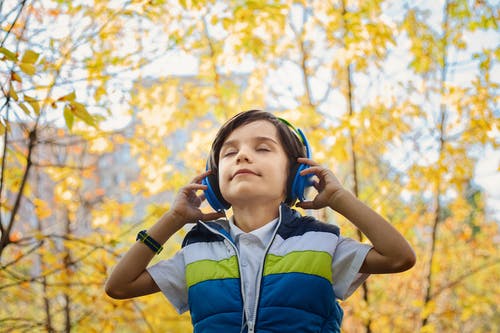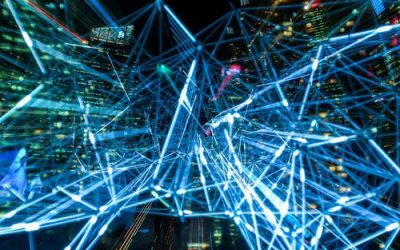Hello, everyone! Claire Miller here! This is my first article and I am so very excited to be sharing this article with all of you. This means a lot to me. The topic I chose for this article was Noise Induced Hearing Loss. I firmly believe that although it is quite ubiquitous, it is extremely preventable. Back in Elementary School, we had a guest speaker come to my school and talked a bit about the condition. I was fascinated by it from a young age and I am determined to make a difference in its numbers. This is an underrated problem in Dallas as not enough people are taking measures to prevent NIHL and many are unaware. I have decided to answer FAQs and do further research through interviews with people in our very own area of Dallas Texas. I hope to post a follow up post soon! Thanks for reading, and enjoy!
Background Information
Noise Induced Hearing Loss (NIHL) is present in at least 10 million Americans. Everyday, we are exposed to hundreds of different noises from the closing of a door to the clatter of pots and pans. Most noises that we experience from day to day are within a certain frequency regarded as safe; under 85 dBA. When the noise is over 85 dBA, it can pose as dangerous to the eardrums and the ear as a whole, resulting in NIHL. Oftentimes, this condition is completely preventable.
Choosing to stay away from loud noises, wearing earplugs in noisy environments, and taking precautions to protect our ears can severely reduce the presence of the condition in us.The main problem that this condition poses is how it is difficult to detect, as hearing loss occurs gradually and over an extended period of time. This can make NIHL often hard to detect and prevent people from taking immediate action against it. Fortunately, much research is being conducted in the area of this condition.
Currently, The National Institute on Deafness and Other Communication Disorders is researching the condition and they have found leads as to the hair cell growth reverse processes which are undergoing further investigation. When our ears are exposed to these noises that are over 85 dBA, the hair cells in our ears essentially die and they can never grow back. These cells are what allow us to hear to the best of our ability and without them, our hearing would be impaired,
Research
A Q & A with AAO-HNS Member Expert Barry E. Hirsch, MD, Professor, Department of Otolaryngology and Communication Sciences and Disorders, and Neurological Surgery, University of Pittsburgh School of Medicine; Director, Division of Otology; and Chair, AAO-HNS Hearing Committee.
Q. What is noise-induced hearing loss?
A. Human ears are exposed to noises and sounds every day and in many ways. Usually, the noises we hear are helpful to us, allowing us to engage in conversations, listen to music and avoid dangerous situations. However, when we are exposed to harmful noises – sounds that are too loud, or loud sounds that last a long time – sensitive structures in the inner ear can be damaged, causing noise-induced hearing loss. These sensitive structures, called hair cells, are small sensory cells that convert sound energy into electrical signals that travel to the brain, where the brain converts them into meaningful sounds. Once damaged, hair cells cannot grow back and lose the ability to conduct sound.
Q. What are the symptoms of noise-induced hearing loss?
A. The symptoms of noise-induced hearing loss are subtle in the early stages. Hearing loss tends to occur first for high-pitched (frequency) sounds only. Consequently, the volume of sound heard may be unchanged but the quality of it lessens. Over time, speech may be heard but not completely understood. The presence of background noise can make speech hard to understand. Noise-induced hearing loss can also be accompanied by a ringing in the ears (tinnitus).
Q. When is noise dangerous?
A. Sound is measured in units called decibels (dB). On the decibel scale, an increase of 3 dB means that a sound is two times more intense, or powerful. To your ears, it sounds almost twice as loud. The humming of a refrigerator is 45 decibels, normal conversation is approximately 60 decibels, and the noise from heavy city traffic can reach 85 decibels.
Noise can be dangerous through a one-time exposure to an intense impulse sound, such as an explosion, or by continuous exposure to loud sounds over an extended period of time, such as noise generated in a woodworking shop, fabricating plant or by loud engines.
Sources of noise that can cause noise-induced hearing loss include motorcycles, firecrackers and firearms, all of which can emit sounds from 120 to 150 decibels. Long or repeated exposure to sounds at or above 85 decibels can cause hearing loss. The louder the sound, the shorter the time period before NIHL can occur. Sounds of less than 75 decibels, even after long exposure, are unlikely to cause hearing loss.
Here are some basic rules to follow if you are concerned about dangerous noise:
If it is necessary to shout to hear yourself or someone else over noise, the level of the sound can be damaging.
Should ringing in the ears occur after exposure to a loud sound, damage has been done and that sound should be avoided or ear protection used in the future.
If diminished hearing or a sense of fullness in the ears is experienced after noise exposure, the level of that noise is damaging.
Q. How can I protect my hearing?
A. Some helpful tips:
If you work in noisy places or commute to work in noisy traffic or construction, choose quiet leisure activities instead of noisy ones.
Develop the habit of wearing earplugs or ear muffs when you know you will be exposed to loud or prolonged noise.
Earplugs and/or ear muffs can effectively reduce sound energy hitting your ears by about 25 dB and can mean the difference between dangerous and safe levels of noise.
Try not to use several noisy machines at the same time.
Keep personal music players (mp3 players) and personal gaming device headsets, television sets and stereos on a low volume.
Bibliography (MLA Format):
Hirsch, Barry. “Noise-Induced Hearing Loss: Q&A With Dr. Barry Hirsch.” ENT Associates of Greater Kansas City, www.entofgkc.com/patient-health-information/ears/noise-induced-hearing-loss-q-a-with-dr-barry-hirsch.
“Noise-Induced Hearing Loss.” National Institute of Deafness and Other Communication Disorders, U.S. Department of Health and Human Services, 14 June 2019, www.nidcd.nih.gov/health/noise-induced-hearing-loss.
If You Like This You May Like
Smoggy Views of Dallas
When you think of air pollution or even smoggy cities, you might think of areas such as Beijing and New Delhi, but have you ever considered how polluted our very own city of Dallas is? Dallas has a high level of air pollution due to greenhouse gases and car emissions. We, as people of the city of Dallas, can help change this problem. Let’s take a deeper dive into this problem and see what we can do to change things.
Put that Phone Away!
Using an electronic device before bed has many consequences. Throughout Dallas, TX, and even the whole world many people use their phones before bed which they consider relaxing. However, the cons outweigh the pros of using a device before sleeping. Why is it that people choose to ruin their body and health when there is an easy fix?
Lack of Healthcare For Low Income Makers
Dallas, a glamoring city on the outside however, isn’t the same on the inside. The city lacks much needed citizens benefits and needs, including the very crucial area of healthcare. Many of Dallas’s lower tier citizens don’t get any benefits at all. Companies don’t have to pay money to them while they are sick and healthcare insurance is as expensive as ever for them despite their low incomes causing them to sink deeper and deeper into poverty.
















This is such an eye opening article! Thank you Claire for talking about a passionate subject for you,
Thanks!
Wow I never knew about this severe problem. This will really help me to prevent this in my daily life! Good article, I loved the official sources.
Thank you!
Thanks for taking the time to discuss this, I feel strongly about it and love learning more on this topic. If possible, as you gain expertise, would you mind updating your blog with more information? It is extremely helpful for me.
Thanks heaps for this!… if anyone else has anything, it would be much appreciated. Add Your Link Free in Popular Webdirectory http://www.Directory.M106.COM Thx & Enjoy!
This is a fascinating article by the way. I am going to go ahead and save this article for my brother to read later on tonight. Keep up the fine work.
Nicely done! – I looked at the Wiki on this and it did not have as detailed info – thanks!
What youre saying is completely true. I know that everybody must say the same thing, but I just think that you put it in a way that everyone can understand. I also love the images you put in here. They fit so well with what youre trying to say. Im sure youll reach so many people with what youve got to say.
Spolka to pomyslowy wynalazek, zwykle sklada sie jak kubistyczny obrazek, dla zapewnienia sobie indywidualnych zyskow i unikniecia odpowiedzialnosci, przez co urzad skarbowy ogarnia furia zlosci… 🙂 jAK NIE PLACIC Podatkow ? look this >> Raje Podatkowe Warto!
Good to be going to your blog once more, it has been months for me. Nicely this article that ive been waited for so long. I require this write-up to total my assignment in the school, and it has same subject together with your article. Thanks, excellent share.
As a Newbie, I am continuously searching online for articles that can be of assistance to me. Thank you
Przeciwnosci, z ktorymi musimy sie zmierzyc, czesto sprawiaja, ze stajemy sie silniejsi. To, co dzis wydaje sie strata, jutro moze okazac sie zyskiem. – Nick Vujicic
I did a search on the issue and found most guys will approve with your website.
I am very impressed. I found a lot of informative stuff in your article. Keep it up. Excellent JOB Thx!.
I have read a few of the blog posts on your blog these few days, and I truly like your way of blogging. I added it to my favorites site list and will be checking back soon. Please check out my site too and let me know your thought.
I had this page saved a while ago but my computer crashed. I have since gotten a new one and it took me a while to find this! I also in fact like the template though.
Its unusual for me to find something on the internet thats as entertaining and intriguing as what you have got here. Your page is lovely, your graphics are outstanding, and whats more, you use source that are relevant to what you are talking about. Youre certainly one in a million, keep up the good work!
Appreciate this post. Let me try it out.
I really enjoy this theme youve got going on on your website. What is the name of the template by the way? I was thinking of using this style for the site I am going to put together for my class project.
Hello there! This is my 1st comment here so I just wanted to
give a quick shout out and say I genuinely enjoy reading through your posts.
Can you suggest any other blogs/websites/forums that cover the same subjects?
Thanks a ton!
Hey I know this is off topic but I was wondering if you knew of
any widgets I could add to my blog that automatically tweet my newest twitter
updates. I’ve been looking for a plug-in like this for
quite some time and was hoping maybe you would have some experience
with something like this. Please let me know if you run into anything.
I truly enjoy reading your blog and I look forward to your new updates.
This is some helpful material. It took me a while to locate this web site but it was worth the time. I noticed this page was hidden in bing and not the number one spot. This web page has a ton of first-class material and it does not deserve to be burried in the search engines like that. By the way I am going to save this site to my list of favorites.
Just want to say your blog is very good. I always like to hear something new about this because I have the similar blog in my Country on this subject so this help´s me a lot. I did a search on the issue and found a good number of blogs but nothing like this.Thanks for sharing so much in your blog.. Greets, Darijan
Prawdziwy z Ciebie talent i mistrz pióra z ogromną łatwością przekładasz myśli na słowa… trzymaj tak dalej, dbaj i pięlęgnuj swego bloga… Skąd czerpiesz tak ciekawe inspiracje ?
Prawdziwy z Ciebie talent i mistrz pióra z ogromną łatwością przekładasz myśli na słowa… trzymaj tak dalej, dbaj i pięlęgnuj swego bloga… Skąd czerpiesz tak ciekawe inspiracje ?